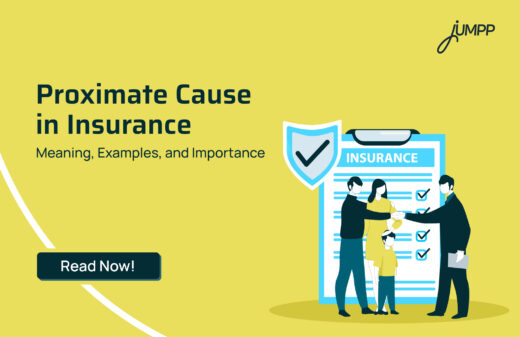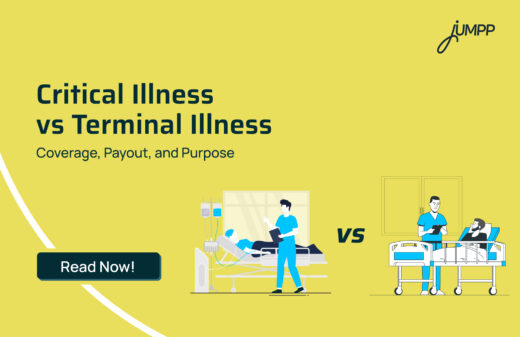Whole Life Insurance: Permanent Coverage, Cash Value, and Lifetime Protection

When people talk about life insurance, they usually think of term plans that have a fixed duration, are affordable, and simple. But what happens after that term ends? What if you live longer than your coverage, and your family’s financial protection expires before you do? That is where whole life insurance becomes helpful. It is a policy designed to last as long as you live, building value while ensuring that your family receives a guaranteed benefit whenever you are no longer around.
Let’s explore the exclusive features of whole life insurance and read about the types of whole life insurance policies.
What is Whole Life Insurance?
Whole life insurance is a type of life cover that protects you for your entire lifetime, usually up to the age of 99 or 100, as long as you continue paying the premiums. Unlike term insurance, it also builds a cash value over time, which works like a savings or investment component within the policy.
What are the Features of Whole Life Insurance?
Here are the features of the whole life insurance policy that help secure your future.
Lifelong Protection: Whole life insurance provides coverage for your entire lifetime. This ensures that your family receives the payout upon your passing, not just for a limited term.
Guaranteed Death Benefit: Your nominees receive a fixed, guaranteed sum after your death.
Cash Value Accumulation: A part of your premium goes into a savings element that builds cash value over time.
Open a zero-balance savings account with the best savings app in India!
Level Premiums: The premium amount you start with remains the same throughout your life.
Access to Funds: You can borrow or withdraw from your accumulated cash value in case of emergencies or financial needs.
Dividends (in Participating Policies): Some whole life plans may pay dividends depending on the insurer’s profits. These can be used to increase coverage, grow savings, or reduce premiums.
Estate Planning Advantage: Whole life insurance supports wealth transfer and estate planning.
How a Whole Life Insurance Policy Works
To truly understand Whole Life Insurance, you need to see how it works.
1. Premium Payments: You pay regular, fixed premiums to keep your policy active.
2. Coverage and Cash Value: A portion of your premium goes towards insurance coverage, and the remaining amount builds a cash value component.
3. Steady Growth: The cash value grows gradually over time at a guaranteed rate, adding a savings element to your policy.
4. Access to Funds: You can borrow or withdraw from your cash value whenever needed. You must keep one thing in mind that unpaid loans reduce the final payout.
5. Payout to Nominees: When the insured passes away, the insurer pays the guaranteed death benefit to the beneficiaries after deducting any pending loans or withdrawals.
What are the Various Types of Whole Life Insurance
Whole life insurance plans come in different forms. These depend on how premiums are paid, how cash value grows, and whether dividends are included.
1. Level Premium Whole Life Insurance:
This is the most common type. Herein, the premium payments remain fixed throughout the policy’s lifetime. It provides predictable costs and consistent coverage without any increase in premiums over time.
2. Limited Payment Whole Life Insurance:
In this option, premiums are paid for a specific period. This could be 10, 15, or 20 years, after which the policy becomes fully paid-up. You enjoy lifetime coverage without paying premiums beyond that period.
3. Single Premium Whole Life Insurance:
Here, you make one large lump-sum payment in advance, and the policy remains active for life. It offers immediate cash value and eliminates the need for future payments.
4. Modified Whole Life Insurance:
This plan starts with lower premium payments in the early years, which gradually increase later on. The coverage and death benefit, however, stay constant throughout your life.
5. Participating Whole Life Insurance:
In this type, policyholders may receive dividends based on the insurer’s financial performance. You can use these dividends as cash. Not only this, you can also buy additional coverage, or applied toward future premium payments.
6. Non-Participating Whole Life Insurance:
This plan does not pay dividends but generally offers fixed guarantees and slightly lower premiums.
7. Universal and Variable Whole Life Insurance (Related Options):
Some flexible permanent life plans, like universal life and variable life, are often grouped with whole life. Universal life allows adjustable premiums and death benefits, while variable life links cash value to market-based investments.
What is the Difference Between Term and Whole Life Insurance
The main difference between term and whole life insurance lies in duration and value.
Term life insurance offers protection for a fixed period and has no cash value. On the flipside, a whole life insurance policy covers you for your entire lifetime and builds a cash value that grows over time.
| Feature | Term Life Insurance | Whole Life Insurance |
| Coverage Duration | Covers you for a specific period, such as 10, 20, or 30 years. | Provides coverage for your entire lifetime. |
| Cash Value | Does not include any cash value component. | Builds cash value over time that can be borrowed or withdrawn. |
| Premiums | Lower premiums since it offers only pure protection. | Higher premiums as it includes both insurance and savings; premiums remain level for life. |
| Purpose | Ideal for short-term needs like income replacement or family protection during working years. | Designed for lifelong coverage and long-term financial planning with savings benefits. |
| Death Benefit | Paid only if the policyholder dies within the policy term. | Guaranteed payout whenever the policyholder passes away, as long as premiums are paid. |
Know about term insurance in detail!
Whole Life Insurance Eligibility
Before buying a whole life insurance policy, it is important to understand the eligibility factors that insurers consider.
1. Age Criteria:
Most insurers require applicants to be at least 18 years old. The maximum entry age usually ranges between 60 and 65 years.
2. Income Stability:
A regular income is essential to qualify. This assures the insurer that you can sustain premium payments over the long term. Your income level may also determine the maximum sum assured you are eligible for.
3. Health Condition:
Your health plays a major role in determining eligibility and premium costs. Insurers may ask for a medical examination to assess your overall health and risk profile. You should know that your pre-existing health conditions can influence your premium amount or approval.
4. Residency Requirements:
You must meet the insurer’s residency criteria. You must be an Indian resident or an NRI purchasing through approved channels.
5. Documentation:
You need to provide proof of identity (such as a PAN or Aadhaar card), proof of age, income proof, and address proof during the application process.
Things to Keep in Mind While Choosing Between Term and Whole Life Insurance
1. Coverage Duration:
Term life insurance protects you for a fixed period. This is usually between 10 and 30 years. Whole life insurance, on the other hand, offers lifetime coverage as long as you keep paying the premiums.
2. Cash Value Growth:
Term insurance has no savings element. Whole life insurance builds a cash value over time, which can be borrowed or withdrawn when needed.
3. Cost Difference:
Term plans are more affordable because they only provide pure protection. Whole life insurance costs more since it includes lifelong cover and a savings or investment component.
4. Financial Goals:
You should choose term insurance if your goal is short-term financial protection. But you must choose a whole life insurance policy if you want long-term financial planning.
5. Premium Stability:
Whole life insurance premiums stay fixed for life, making it easier to budget over the long run. Term plan premiums may change if renewed after expiry.
6. Flexibility:
Whole life policies offer flexibility through loans and withdrawals from the cash value. Term insurance has no such option and pays out only if the policyholder passes away during the term.
Conclusion
Whole life insurance is a lifelong financial commitment that combines protection with savings. While it demands consistent premium payments and a long-term view, it rewards policyholders with lifetime cover, stable benefits, and growing value over time.
However, before making a decision, it is important to assess your financial goals, budget, and risk tolerance.
Term plans may be more affordable for short-term needs, but if you value lasting protection and disciplined wealth building, a whole life policy can help you achieve both.
Whole Life Insurance- FAQs
A whole life insurance policy is a permanent form of life insurance that provides coverage for the insured’s entire lifetime, typically until age 99 or 100.
Neither is universally better; the choice depends on your needs, goals, and budget. Term life insurance offers high coverage at a low cost for a fixed period, while whole life insurance is more expensive but provides lifelong protection with a savings component.
The 3-year rule under Section 45 of the Insurance Act refers to a contestability period during which the insurer can investigate and deny claims if there is evidence of fraud or misrepresentation. After three years from policy issuance or revival, the insurer generally cannot question its validity except in cases of proven fraud.
After 20 years of paying for a standard whole life insurance policy, your coverage continues for life, and the cash value would have grown substantially. In limited-payment plans, the policy may become fully paid-up after 20 years, meaning no further premiums are required.
The main disadvantage of whole life insurance is its higher premium cost compared to term plans, due to lifelong coverage and the cash value component.
Whole life insurance provides coverage for your entire life, usually up to age 99 or 100. You have to pay premiums for the life of the policy.






